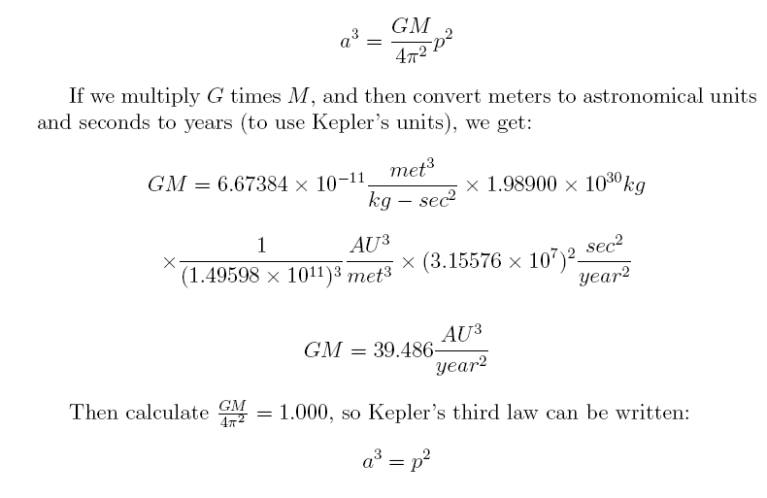As we have just celebrated the Earth
completing another orbit around the
sun, it is a good time to ask the
question: why does the length of
a year have the value it does?
This value is determined by
the distance between Earth and
the sun, as described by Kepler’s
third law. This law states that the
cube of the semi-major axis of an
elliptical orbit is proportional
to the square of the period of the orbit.
If we measure time in Earth years
and distance in astronomical units,
then p=1 and a=1, and the
cube of the semi-major axis is equal
to the square of the period.
Kepler derived this law based on
Tycho’s observations of the planets.
Not long after that Newton showed
how this law can be derived from
his more general law of gravity.
Here are the details,
where a is the semi-major axis of
the orbit, G is Newton’s gravity
constant, M is the mass of the sun,
and p is the period of the orbit.

……………..
–Douglas Downing
You are welcome to write your comments on the facebook page at
https://www.facebook.com/DouglasADowningSPU/?ref=profile
This blog is part of the
Seattle Pacific University Political Economy blog group
(click here for index, now up to date).
Click here for the index of topics for the blog
note: the previous two web addresses have changed;
the old version should still redirect to the new version
Twitter:
https://twitter.com/douglasdowning
THere will be new postings about twice per week.